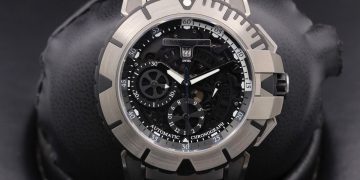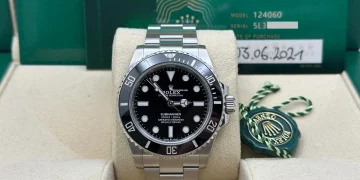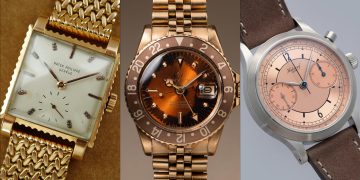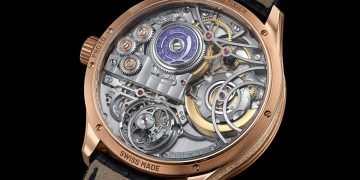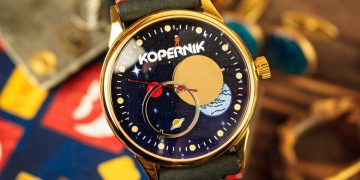Introduction
The world of horology is not only a celebration of fine craftsmanship but also a reflection of the cultural landscapes from which watches emerge. From the intricate, hand-finished timepieces crafted in Switzerland to the technologically advanced smartwatches from Silicon Valley, the cultural background of the watchmaking country plays a significant role in shaping the design, aesthetics, and functionality of watches. Culture influences everything from the materials used in watches to the form and function of the timepieces themselves. The question arises: How deeply does cultural background influence watch design styles? This article explores the profound connection between culture and watch design, highlighting the distinct regional influences that have shaped horology over the centuries.
1. The Role of Culture in the Evolution of Watchmaking
1.1 The Swiss Watchmaking Legacy
- Swiss Precision and Craftsmanship: The Swiss have long been the undisputed leaders in horology. Their meticulous attention to detail and dedication to precision have established Swiss watches as symbols of quality and luxury. The origins of Swiss watchmaking can be traced to the 16th century, and over time, Swiss culture, which values precision and excellence, has deeply influenced the design ethos of Swiss watches.
- The Aesthetic Influence of Swiss Culture: Swiss watchmakers often emphasize simplicity, elegance, and understated luxury. Watches from iconic Swiss brands like Patek Philippe, Rolex, and Audemars Piguet are known for their classic designs, which are often marked by refined cases, minimalist dials, and luxurious materials. This preference for timeless beauty is deeply tied to Swiss values of craftsmanship and heritage.
- Innovation in Tradition: While rooted in tradition, Swiss watchmaking has also embraced innovation, particularly in mechanical movements. Swiss culture has fostered a balance between honoring horological heritage and integrating cutting-edge technology, as seen in developments like the tourbillon and the use of high-tech ceramics and materials.
1.2 Japanese Watchmaking and Attention to Detail
- The Zen Philosophy and Its Influence: Japanese culture has a profound influence on the aesthetic design and functionality of watches. The Zen philosophy, with its emphasis on minimalism, symmetry, and simplicity, plays a role in the design of many Japanese watches. This can be seen in the clean, straightforward designs of Seiko and Citizen watches.
- Craftsmanship in Japanese Watchmaking: Japanese watchmakers are renowned for their attention to detail and precision, drawing on centuries-old craftsmanship traditions. Brands like Grand Seiko are celebrated for their stunning finishes and the beauty of their mechanical movements. The influence of Japanese culture is reflected in the use of nature-inspired motifs and techniques, such as the Urushi lacquer and Shunkei finishing techniques.
- Technological Prowess and Innovation: Japan has also been at the forefront of integrating technology with watchmaking. The Quartz Revolution of the 1970s, led by Seiko, was a direct result of Japan’s innovative approach to precision engineering and technology. The clean and functional design of many Japanese watches is a direct reflection of the country’s forward-thinking mindset and culture of innovation.
1.3 The Influence of American Watchmaking and Innovation
- Practicality and Functionality: American watchmaking has historically prioritized function over form, reflecting the nation’s utilitarian values. During the 19th and 20th centuries, American brands like Hamilton and Waltham became known for producing rugged, reliable timepieces that were favored by military personnel and adventurers.
- The American Spirit of Adventure: American watches often reflect a spirit of exploration and innovation. The design of watches in America tends to be more robust and practical compared to the refined elegance of European timepieces. This practical approach is evident in Tool Watches, designed for specific uses such as diving, aviation, and military applications. Watches like Omega’s Seamaster and Breitling’s Navitimer embody this spirit of rugged exploration.
- Pop Culture Influence: The influence of American pop culture, especially through Hollywood, has also played a significant role in the design of watches. The famous association of watches with characters like James Bond and Steve McQueen in films helped shape the design and popularity of certain iconic timepieces, like the Rolex Submariner and Tag Heuer Monaco.
2. Cultural Impact on Watch Design Styles
2.1 Traditional and Modern Design Aesthetics
- European Minimalism vs. Oriental Ornamentation: In terms of aesthetic influence, European watches, especially Swiss, often embrace minimalist designs with a focus on elegance and symmetry. In contrast, Asian watchmaking, particularly Japanese and Chinese, is often influenced by a rich tradition of ornamentation and intricate detailing, stemming from their cultural reverence for nature and craftsmanship.
- Functionality in Design: In cultures with a strong focus on practicality, like the United States or Germany, watches often prioritize functionality and precision. Brands like A. Lange & Söhne in Germany focus on mechanical precision, while Casio in Japan brings the practical element of digital technology and ruggedness into their designs.
- Luxury and Symbolism: Luxury watches are designed to symbolize status, wealth, and tradition, and this symbolism varies greatly from culture to culture. Swiss watches are often associated with heritage and understated luxury, while American watches may symbolize practicality, durability, and a rugged lifestyle. Japanese watches often emphasize simplicity, craftsmanship, and a connection to nature.
2.2 Color, Material, and Cultural Significance
- Cultural Symbolism of Colors and Materials: Different cultures place varied levels of importance on color and material in watchmaking. For example, in China, red and gold are traditionally symbols of prosperity and happiness, which is why these colors may appear frequently in Chinese-designed watches. Similarly, the choice of materials is also culturally significant. For instance, Japanese watches often incorporate titanium for its strength and lightweight properties, reflecting Japan’s obsession with technological advancement and precision.
- Innovative Use of Materials: In Swiss watchmaking, the use of gold, platinum, and diamonds is a symbol of opulence and luxury, while Japanese watchmakers use a mix of stainless steel, ceramic, and other durable, lightweight materials. These choices are influenced by the cultural importance of both luxury and functionality.
3. The Influence of Globalization on Watch Design
3.1 Cross-Cultural Exchange in Design
- Hybrid Designs: As the watchmaking industry has become increasingly globalized, hybrid designs have emerged that blend the styles of different cultures. Swiss brands are collaborating with Japanese and American companies to create watches that combine Swiss precision with the rugged, durable designs typical of American and Japanese watches. This fusion allows consumers to access the best of both worlds.
- The Role of International Markets: Globalization has also led to a shift in consumer demand. Watch brands now design timepieces that appeal to international tastes, integrating elements from different cultural traditions. As a result, watches today may feature a mix of European sophistication, American durability, and Asian innovation, all within the same timepiece.
3.2 The Influence of Global Brands and Consumer Expectations
- Market Preferences and Cultural Influence: As the demand for watches has grown worldwide, the tastes of different cultures have begun to influence design choices. While European brands have historically focused on luxury and refinement, there is an increasing interest in more affordable, durable watches in emerging markets like India and China. This has led to the development of more versatile, robust designs that cater to these markets, reflecting a blend of cultural influences.
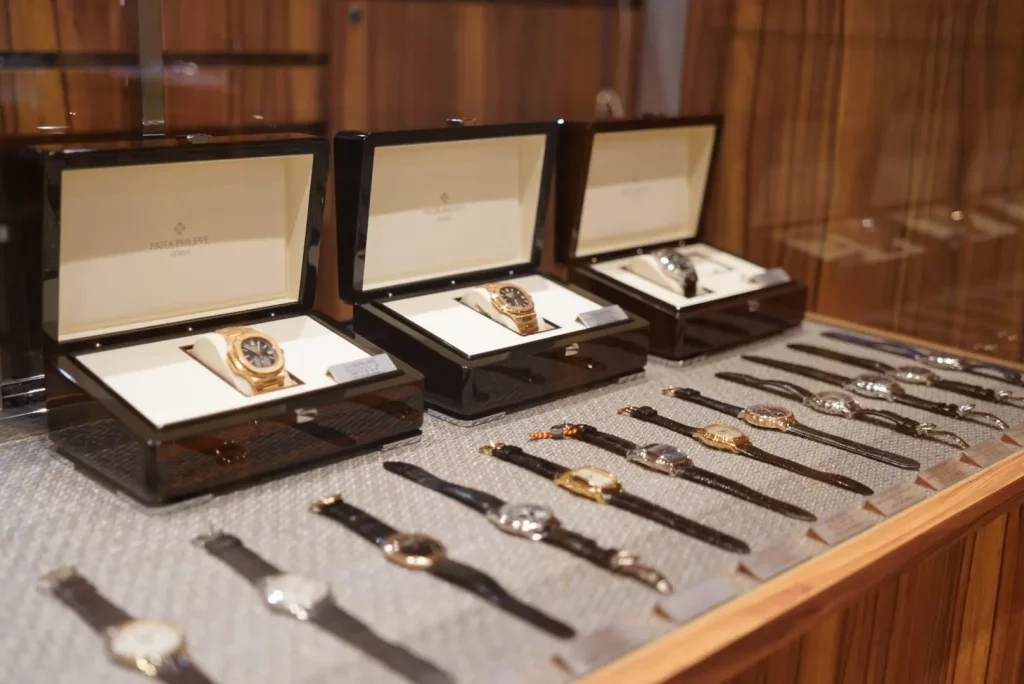
4. The Future of Cultural Influence in Watch Design
4.1 Evolving Design Trends
- Technology Meets Tradition: With the rise of smartwatches, design considerations are also influenced by the need to integrate technology with traditional watchmaking aesthetics. In the future, watches may need to accommodate both traditional craftsmanship and the smart functionalities desired by modern consumers. This duality of design could reflect the global trend of blending cultures, where old-world craftsmanship coexists with cutting-edge technology.
- Sustainability and Eco-Conscious Design: As sustainability becomes more prominent in global consumer culture, watchmakers are likely to incorporate environmentally conscious practices into their designs. Cultures that value nature and sustainability, like those in Scandinavian countries, may lead the way in producing eco-friendly timepieces.
4.2 The Global Impact of Design Philosophy
- Cultural Shifts in Luxury Perception: As new markets emerge, the perception of luxury is shifting. The traditional association of luxury with European watchmaking may no longer hold true, and consumers from around the world may value watches that offer a blend of craftsmanship, functionality, and cultural relevance. The future of watch design will likely see a convergence of cultural influences, resulting in timepieces that reflect global, rather than strictly regional, values.
Conclusion
The cultural background of a country has a profound impact on the design and development of watches. From the meticulous craftsmanship of Swiss timepieces to the technological innovation of Japanese watches, each culture’s values and history have shaped its unique approach to watchmaking. As globalization continues to influence consumer tastes and expectations, the future of horology will likely witness even greater cross-cultural exchange, leading to a more diverse and inclusive industry. Ultimately, the rich variety of design philosophies influenced by different cultures enriches the world of horology, offering a wide range of timepieces that appeal to the tastes, values, and lifestyles of watch enthusiasts around the world.



